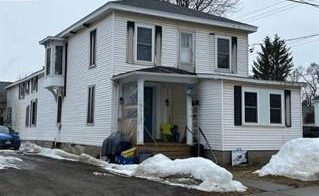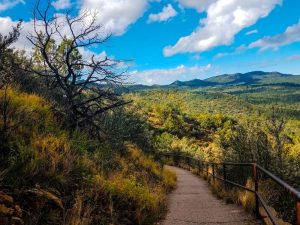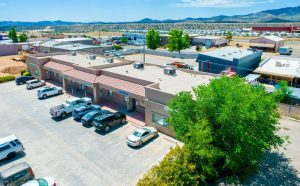Introduction:
Prescott is a charming city that boasts not only a rich history but also breathtaking natural beauty. From the majestic mountains and sprawling forests to the sparkling lakes and winding trails, Prescott’s land is a treasure trove of outdoor wonders waiting to be explored.
As the city continues to grow and evolve, it is crucial that we understand the unique characteristics of its land and how to preserve and protect it for generations to come.
In this article, we’ll take a closer look at the land in Prescott, AZ, and explore its location, geography, land use, major landmarks and parks, as well as its development and growth.
Overview of Prescott, AZ:
Prescott, AZ is a city located in the central highlands of Arizona, surrounded by a diverse landscape of mountains, forests, and lakes. The area is characterised by its high elevation, with some parts of the city reaching over 5,000 feet above sea level. The land is used for a variety of purposes, including residential, commercial, and industrial development, as well as public parks and protected conservation areas.
Prescott’s location in Arizona:
The land in Prescott, AZ is located in the central highlands of Arizona, in Yavapai County. Prescott is situated about 100 miles north of Phoenix, and 60 miles south of Flagstaff. The city is surrounded by the Prescott National Forest, which encompasses over 1.2 million acres of land, including the Bradshaw Mountains to the south and the Mingus Mountain range to the west. The area is also home to several lakes, including Watson Lake and Goldwater Lake, as well as the Granite Dells, a unique geological formation of granite boulders and cliffs that is a popular destination for outdoor recreation.
Elevation and topography of the area:
The land in Prescott, AZ is characterised by its high elevation and diverse topography. The city is situated in the central highlands of Arizona, with parts of the city reaching over 5,000 feet above sea level. The surrounding area is a mix of mountains, forests, and valleys, with the Bradshaw Mountains to the south and the Mingus Mountain range to the west.
The topography of the area is varied, with rocky outcroppings, rolling hills, and steep canyons. One notable geological formation is the Granite Dells, a unique area of granite boulders and cliffs that rises above Watson Lake. The area is also home to several lakes and reservoirs, such as Watson Lake and Lynx Lake, which provide opportunities for fishing, boating, and other water activities.

Land Use and Zoning:
The land in Prescott, AZ is used for a variety of purposes, with different zoning laws and regulations that govern land use. Here are some of the key aspects of land use and zoning in Prescott:
Residential:
Prescott is primarily a residential community, with a mix of single-family homes, apartments, and townhouses. The city is divided into several residential zoning districts, such as low-density residential, medium-density residential, and multifamily residential.
Commercial:
Prescott also has a thriving commercial sector, with a variety of businesses, restaurants, and shops. Commercial zoning districts include neighbourhood commercial, general commercial, and heavy commercial.
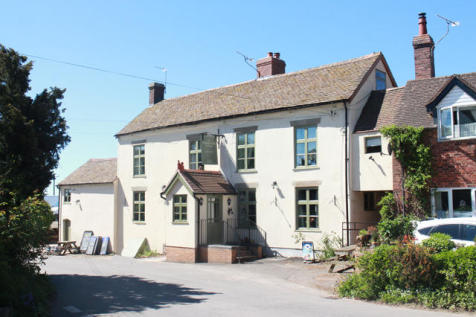
Industrial:
Prescott has a limited industrial sector, with most industrial development concentrated in the Prescott Municipal Airpark area. Industrial zoning districts include light industrial and heavy industrial.
Open space:
Prescott is committed to preserving open space and natural resources. The city has several zoning districts that are designated for open space and conservation, such as open space and resource conservation.
In addition to zoning laws, the city also has specific regulations for building and development, such as setbacks, height restrictions, and parking requirements.
Major Landmarks and Parks:
Courthouse Plaza:
The Courthouse Plaza is the heart of downtown Prescott and home to the historic Yavapai County Courthouse. The plaza is a popular gathering place for community events and festivals, such as the annual Whiskey Row Boot Drop on New Year’s Eve.
Whiskey Row:
Whiskey Row is a historic street in downtown Prescott, known for its saloons, shops, and restaurants. The street was once home to numerous saloons and brothels during the town’s early days as a mining community.
Thumb Butte:
Thumb Butte is a prominent landmark in Prescott, rising over 6,500 feet above sea level. The area around Thumb Butte is a popular hiking destination, with several trails offering stunning views of the surrounding mountains and valleys.
Watson Lake:
Watson Lake is a man-made reservoir located just outside of Prescott. The lake is surrounded by the Granite Dells, a unique area of granite boulders and cliffs that offer spectacular views and opportunities for hiking, rock climbing, and water activities.
Prescott National Forest:
The Prescott National Forest encompasses over 1.2 million acres of land, including the Bradshaw Mountains and the Mingus Mountain range. The forest is home to numerous hiking trails, campgrounds, and recreational areas, and provides opportunities for hunting, fishing, and wildlife viewing.
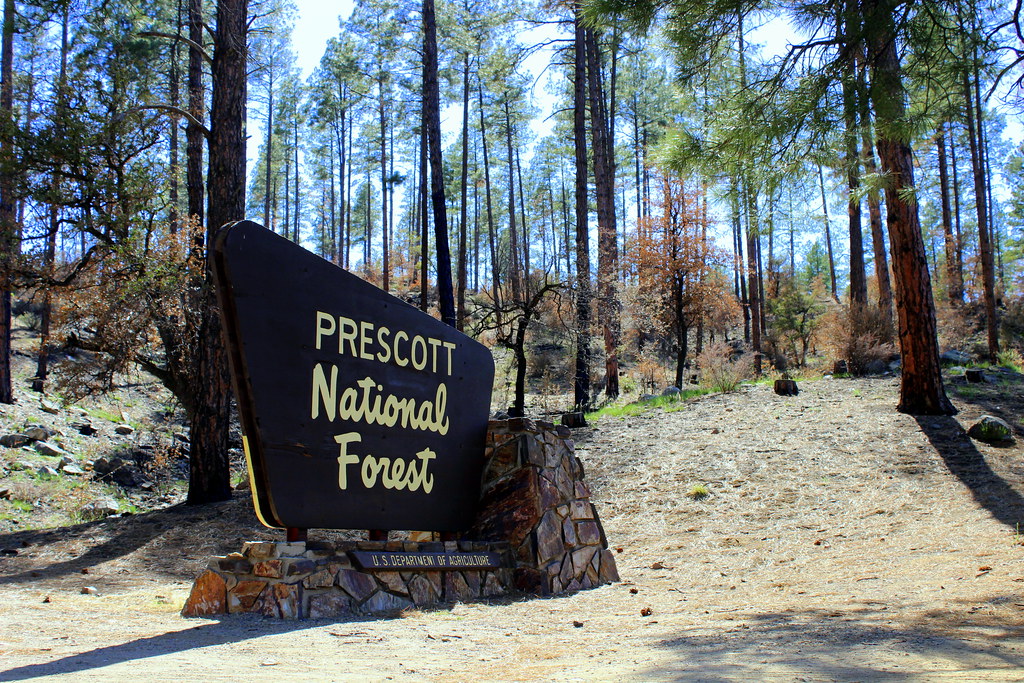
Lynx Lake:
Lynx Lake is a small lake located in the Prescott National Forest, just a few miles southeast of Prescott. The lake is a popular destination for fishing, boating, and picnicking, and is surrounded by several hiking trails.
Overall, the major landmarks and parks in Prescott, AZ reflect the city’s rich history, stunning natural beauty, and commitment to outdoor recreation and conservation.
Development and Growth:
The development and growth of land in Prescott, AZ have been shaped by the city’s rich history and its natural resources. Prescott was founded in 1864 as a mining town, and over the years has evolved into a vibrant community with a diverse economy and a high quality of life. Here are some key milestones in the development and growth of land in Prescott:
Mining boom:
The discovery of gold and other minerals in the surrounding mountains led to a mining boom in the late 1800s. The influx of people and resources fueled the growth of the town, with new businesses, homes, and infrastructure being built to support the mining industry.
Railroad era:
The arrival of the railroad in 1888 further boosted the growth of Prescott, making it easier to transport goods and people in and out of the city. The railroad also brought new industries, such as lumber and agriculture, to the area.
Post-war expansion:
After World War II, Prescott experienced a period of rapid growth and expansion, with new homes, businesses, and infrastructure being built to accommodate the growing population. The city’s location, climate, and natural beauty made it an attractive destination for retirees and young families alike.
Sustainable growth:
In recent years, Prescott has focused on sustainable growth and development, balancing economic growth with the preservation of natural resources and the quality of life for its residents. The city has implemented strict zoning laws and building codes to ensure that new development is compatible with the surrounding environment and community.
Overall, the development and growth of land in Prescott, AZ has been shaped by a rich history, natural resources, and a commitment to sustainable growth and development.
FAQs:
Is Prescott, AZ expensive to live?
Compared to the national average, Prescott, AZ is slightly more expensive to live in, with a cost of living index of 107.5. However, the city’s high quality of life and desirable location make it a popular destination for retirees and young families alike.
Is Prescott cold in winter?
Yes, Prescott, AZ can get cold in winter, with average temperatures in the low 40s in December and January. However, the city enjoys mild winters overall, with occasional snowfall and plenty of sunny days.
Is Prescott a safe place to live?
Yes, Prescott, AZ is considered a safe place to live, with a crime rate lower than the national average. The city has a strong sense of community and is known for its friendly and welcoming atmosphere.
Conclusion:
In conclusion, the land in Prescott, AZ offers a unique combination of natural beauty, rich history, and a vibrant community. From the towering Thumb Butte to the bustling Courthouse Plaza, the city is home to numerous landmarks and parks that reflect its diverse and dynamic character. With a focus on sustainable growth and development, Prescott continues to evolve and adapt while preserving its unique charm and quality of life.
If you are looking for outdoor recreation, cultural events, or a welcoming community, you can contact our experts and get information about land in prescott az. Surely they will respond to your all questions related to Prescott az.

